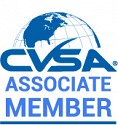Women with Drive Leadership Summit Scheduled for March 5, 2015
OTTAWA, ON (October 14, 2014) – The trucking industry’s first-ever Women with Drive Leadership Summit has been scheduled for March 5 in Toronto – representing one in a series of steps to help address the challenges and barriers faced by women in trucking.
Trucking HR Canada unveiled initial plans for the summit as one activity included in a three-year action plan being finalized by the National Advisory Committee of senior managers and executives from throughout the industry.
The plan is based on the results of surveys which reached out to women already working in trucking, male managers, and women searching for careers. Other actions will include:
• Introducing a marketing campaign to promote trucking as a career of choice for women, and to educate industry employees about the steps to create a truly inclusive workplace.
• Creating mentorship, training and professional development opportunities for women in trucking. In addition to the summit, this will include mentorship programs for frontline workers (drivers, mechanics, dispatchers) and women in management positions.
• Developing workplace procedures which support a more inclusive working environment. Practical tools will include such things as resource materials, information about best practices, and checklists. Further research will also explore the concerns related to compensation which were expressed by women in the surveys.
“We are taking steps to facilitate lasting change, transform business cultures, and support the women who pursue career opportunities in trucking,” said Cavalier Transport’s Vicki Stafford, chair of the National Advisory Committee. “Canada’s trucking industry needs to recruit and retain far more women to maximize its potential and address an intensifying shortage of employees.”
The Conference Board of Canada recently projected a shortage of 25,000 to 33,000 for-hire truck drivers by 2020. While women account for 48 percent of the workers in Canada’s labour force, they represent just 3 percent of Canada’s truck drivers, mechanics, technicians and cargo workers. They are also under-represented in other industry careers, accounting for 11 percent of managers, 13 percent of parts technicians, 18 percent of dispatchers, and 25 percent of freight claims/safety and loss prevention specialists.
“This action plan represents a series of concrete steps to help address one of the trucking industry’s biggest long-term challenges,” said Angela Splinter, CEO of Trucking HR Canada, noting how the work supports recommendations of the Canadian Trucking Alliance’s Blue Ribbon Task Force on the Driver Shortage.
OBAC’s Joanne Ritchie, a member of the National Advisory Committee, says Women with Drive’s mandate to raise awareness of recruitment and retention practices that better support the integration of women into the workforce can make the industry more appealing to everyone. “A safe workplace, a decent wage, a healthy lifestyle, and good life/work balance – all reasonable employment expectations – are the kind of things that are going to attract women to trucking,” says Ritchie. “This aligns with industry’s shift in thinking about what changes are needed to make trucking a career of choice.”
For a complete list of committee members and to follow other Women with Drive activities, visit Trucking HR Canada’s website.







